Central Education System
Description
Our project ‘Central Education System’ aims to totally change the way in which Government schools function, with the help of ICT. We have developed a web portal for KGBVs (Kasturba Gandhi Balika Vidhyalaya) which are upper primary residential girls school especially meant for increasing female literacy of rural India. In our system we tried to include every single possible issue related to KGBVs. Our System consist of all information about the Students (like personal, health, educational etc), about the school where they study (like infrastructure, staff statistics, library system etc) and about the village/town/district where the school is located(like population, literacy rate). Such information would help government to improve education system as government can decide where to open a new school based on female literacy, population and which school require more attention based on infrastructure status, staff statistics etc. The idea of project itself seems to be novel as it is developed targeting the interest of rural population which is generally not getting the enough glimpse of ICT. Very few ICT applications are made solely for them. As the project is being implemented in KGBVs operated by ‘Mahila Samakhya’, a programme of ‘Ministry of Human Resource and Development’, we are getting a good positive feedback.
What we deliver
Presently there is no such provision of maintaining the database of school covering all its aspect. Whatever information is maintained, that is maintained manually. So it becomes almost impossible to get past records. Our project would improve the education system by tracking the students, highlighting the health related problems of students, providing basic information about the block or district where the school is located, suggesting to open new schools, bringing the problems of a school in knowledge of government authority.
Whom we deliver
CES, being a web portal, is very user friendly as right from the home page proper links are provided with suitable name. We tried to minimize user effort by providing drop-down menu boxes for most of the query field. Graphs and images are preferred over text to provide information, maps are used extensively, and query system generates graphs with proper labeling rather than simply displaying values in table. Advance searching keeps on reducing the searched result as the input string goes more specific. For data entry operator (who inserts the data) we have provided them a help manual with proper instructions to follow.
Why is the project unique?
This system is unique in the sense that there is no such system currently implemented in any school. Therefore it is a new idea having a huge potential in future. As our system is platform independent as we have used open source software, user need not to install any kind of software to use it. Uniqueness comes from here too. We developed our project targeted for very low age group as well as for rural welfare which is rarely taken care of. Innovativeness-
a) Map based navigation displaying the location and basic information of blocks and districts.
b) Infrastructure details of different KGBVs along with their photos.
c) Giving access to the girls also to update their certain parameters.
d) Dynamic generation of graphs for different parameters of girls.
e) Four separate access modes are included for security and confidentiality.
f) Concept of private field information of girls, displayed only to administrators and privileged users. Report generation of girls in doc and pdf formats.
g) Search feature by which a girl can be searched by her name directly.
h) Embedded library administration system.
Roadmap
Digital content plays a vital role in development because of its availability and accessibility. It provides us with new abilities to discover and cherish our languages, cultures, histories and national identity. Digital content is changing the way we interact with one another. Since the era of www, digital content became ubiquitous and available 24X7. In the advancing online digital content environment, ideas and information will travel more quickly. Our ability to more rapidly access, connect and interpret demographic, environmental, health and other social and scientific data will help us find new solutions to old problems. Information Technology has the potential to change societal structure and revolutionaries agriculture and industrial structure. Internet which we consider one of the most powerful ICT tool can be used to develop aid effectiveness, improve social services in education and health, harness knowledge management, promote economic opportunity, empower civil society and make government services transparent. Today we are having specific software for almost every kind of work. If we use these tools extensively, we would certainly get better result in less time and less effort. Recently Government of India has approved the proposal to use multi-application smart cards with unique identities (UIDs) for citizens to facilitate easy verification, availing of government or private services, help welfare programmes reach intended beneficiaries and for serving as basis for e-Governance. The proposed system is backed by intensive use of information technology. Thus we conclude that ICT can be used for development in above mentioned ways.
Contact
Mohd Aamir Khan and Gaurav Kumar Tak
Indian Institute of Information Technology and Management
Room No. 232, Boys Hostel-1, ABV-IIITM
Gwalior, Madhya Pradesh
474010




